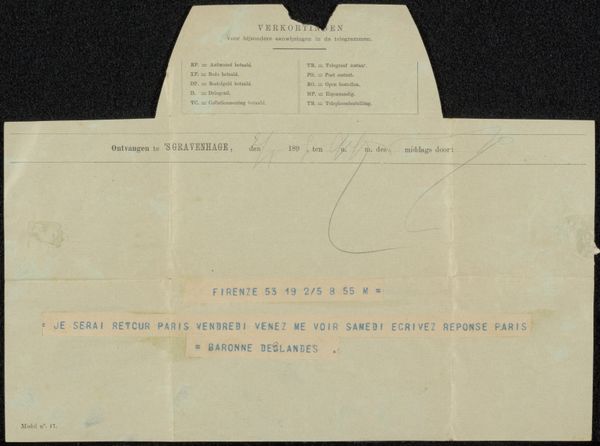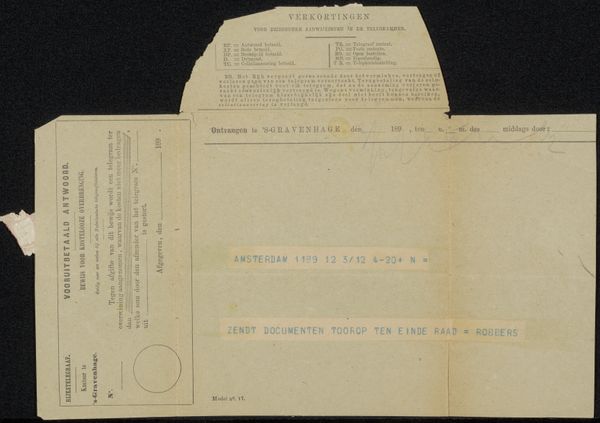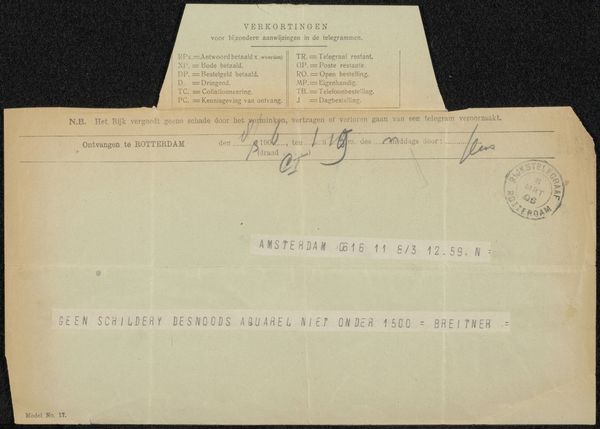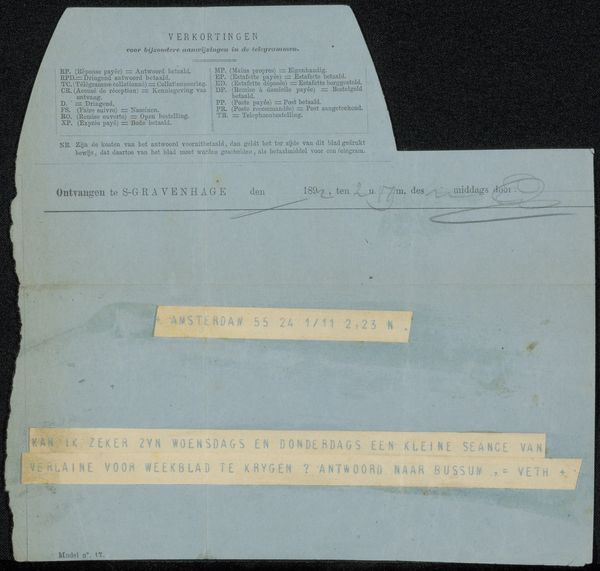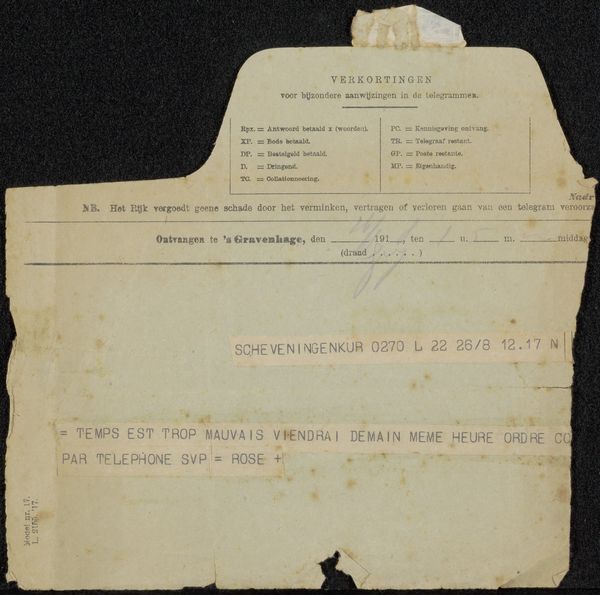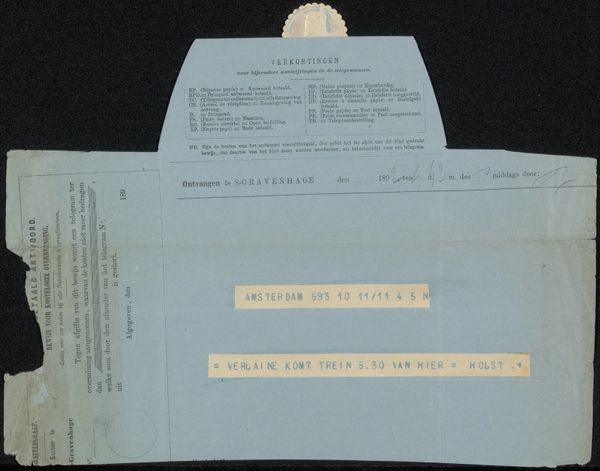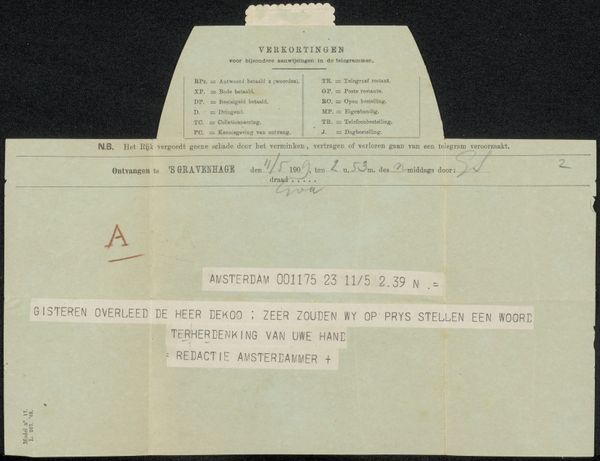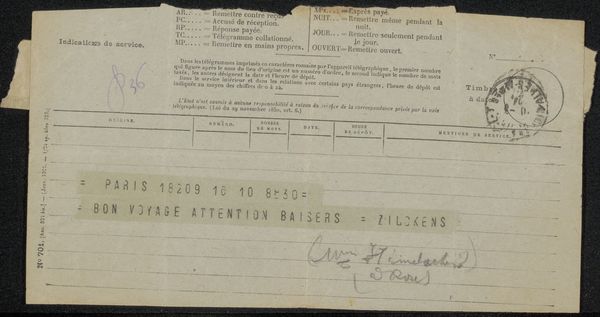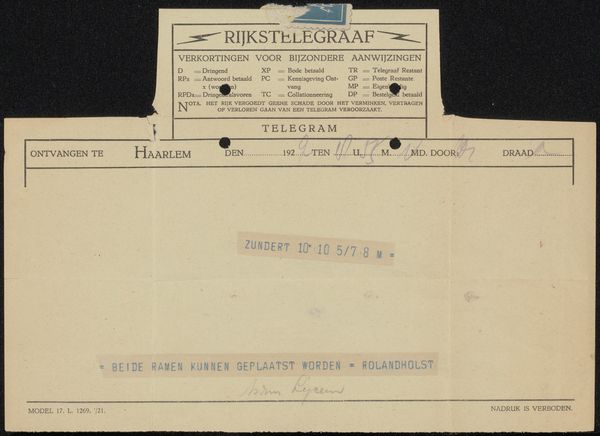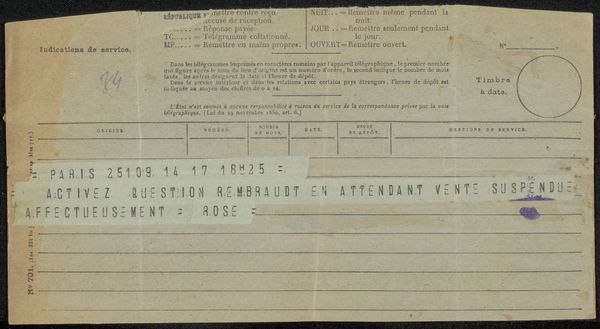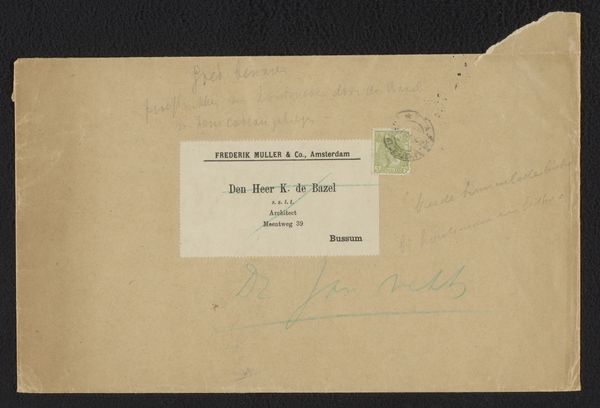
drawing, print, textile, paper
drawing
written text
textile
paper
Copyright: Rijks Museum: Open Domain
Curator: The “Telegram aan Philip Zilcken,” dating from before 1899, appears to be a mixed-media work incorporating drawing, print, paper and possibly textile elements. Note how the arrangement itself dictates our reading, guiding the eye down and across the composition through contrasting light and dark sections. Editor: Yes, I see how the composition creates a flow with distinct spatial separations. It feels immediate and ephemeral. What stands out to you, in particular, about this piece? Curator: I am intrigued by the interplay between text and support. Observe how the paper, likely chosen for its textural qualities and subtle tonality, isn't merely a passive ground. The typography of the pre-printed text contrasts against the urgent handwriting and overprinted telegram message. Do you notice how this visual tension creates layers of meaning? Editor: I hadn't considered the specific textures and their juxtaposition. I can see how the machine printed text with the message on the paper feels distant yet also urgent. The eye of the reader is jumping back and forth in time and urgency! Curator: Exactly. This work exemplifies how seemingly mundane materials and everyday communication can transcend their original function to become objects of artistic contemplation. It provokes reflection on how we convey ideas and how fleeting messages transform into enduring artifacts through form and arrangement. Editor: So the real content becomes the materiality of the artwork itself. That changes my reading of the piece; I appreciate the chance to reflect on the materiality itself as an artwork and its formal qualities!
Comments
No comments
Be the first to comment and join the conversation on the ultimate creative platform.
